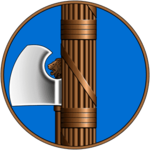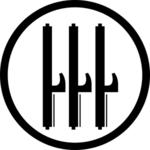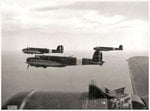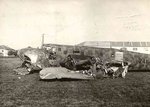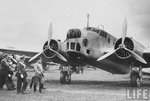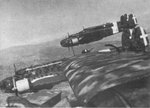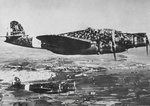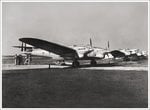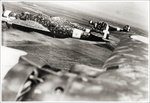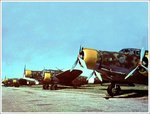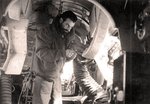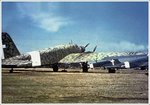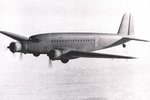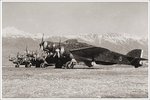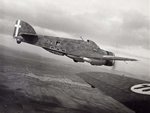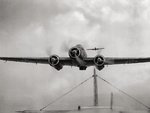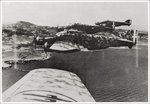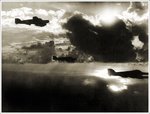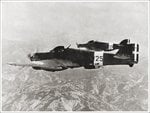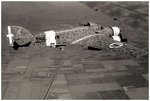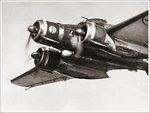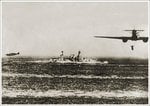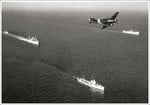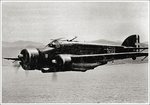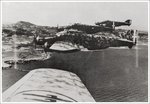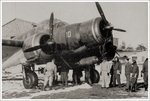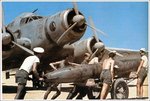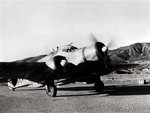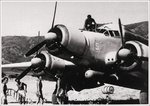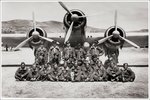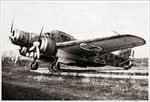By the time Italy entered the World War II. the bomber branch represented about 70% of the strength of the Regia Aeronautica. The Italians settled on the tri-motor design, with basically a medium-range capability for most of their bombers. The design created difficulties for the bombardier and made head-on attacks difficult to defend against. The problem of under-powered engines plagued the bomber fleet as well as the fighters. Generally they were lightly armed and carried a very modest bomb load. Typical of the Italian bombers was the Savoia-Marchetti S-79 Sparrowhawk. With a pair of machine guns on both the top and bottom of the plane, it was lightly armed. Powered by three 780 HP Alpha Romeo engines, it had a top speed of 270 mph and a range of 1200 miles. This bomber, operating in North Africa, the Balkans and the Mediterranean, proved no match for Allied fighters and was ultimately converted to torpedo bomber duty. Fiat manufactured the twin engine Br-20 medium range bomber with the typical light defensive armament, minimal bomb loads and limited range. The Piaggio S-82 was the workhorse of the transport fleet.
Attachments
Last edited:

